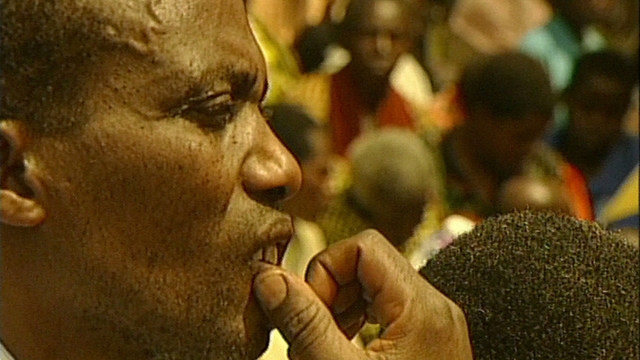Healing Land
Seeking justice for the Rwandan genocide
 During 100 days in 1994, a million Tutsis were brutally rounded up and massacred by their Hutu friends and neighbours. Over 6,000 'genocidaires' have been tried in court. 100 000 are still waiting. Now the Rwandan Government has revived an old tradition to help expedite justice.
During 100 days in 1994, a million Tutsis were brutally rounded up and massacred by their Hutu friends and neighbours. Over 6,000 'genocidaires' have been tried in court. 100 000 are still waiting. Now the Rwandan Government has revived an old tradition to help expedite justice.
On the morning of 7 April 1994, Emmanuel was sent by his Hutu superiors to man a roadblock near the new technical college in Marumbi village. Fleeing Tutsis gratefully followed his orders to hide in some unused buildings, unaware that they were actually being rounded up for a massacre. In four insane and bloody days 50 000 people were shot, hacked and clubbed to death, at an average of 33 murders for each of the 1500 crazed Hutu villagers. Such scenes were repeated across Rwanda. The criminal justice system is crumbling under the weight of bringing them all to justice. "Our laws are no use," despairs Justice minister Jean (de Dieu) Mucyo, "The trials would take more than 200 years." The solution is an age-old tribal court, the Gacaca. Beneath a tree, one hundred residents and nineteen judges, chosen and trained by the government, sit on a hilltop. They will decide the culpability of accused genocidaires. "They are not educated, they are not lawyers, they've never been to school...how can they deal with a crime of genocide?" asks one observer. Questions are also asked about due process, logistics and fairness. But in a country desperate to find catharsis, any justice is better than none.
Produced by SABC Special Assignment
FULL SYNOPSIS

